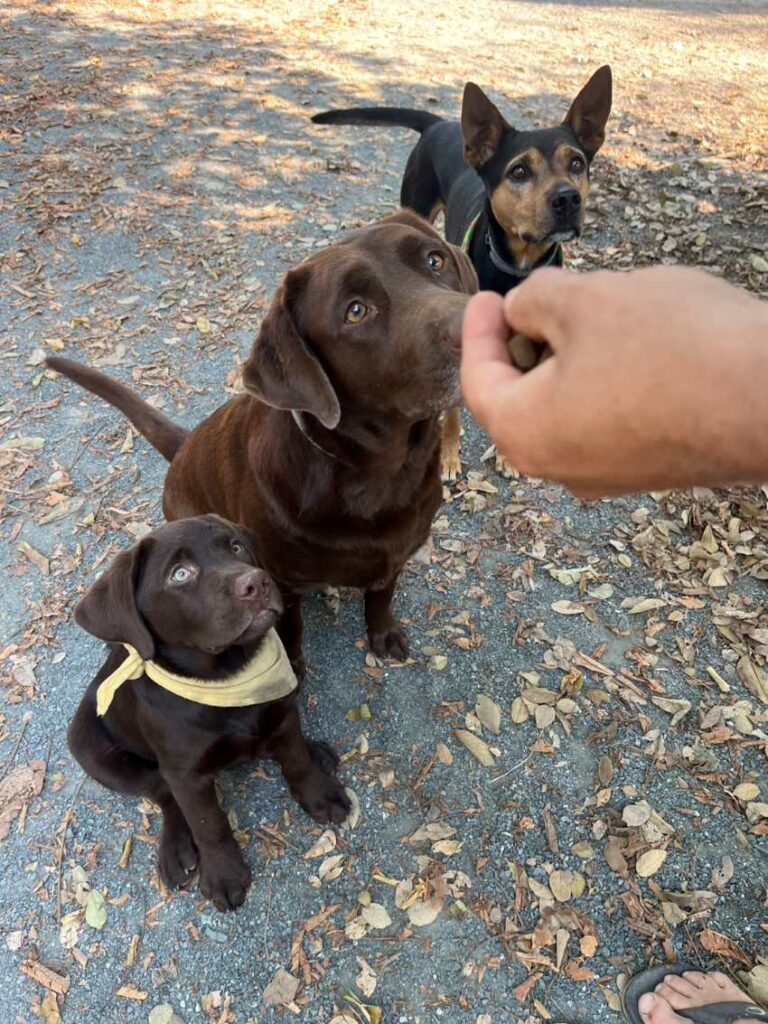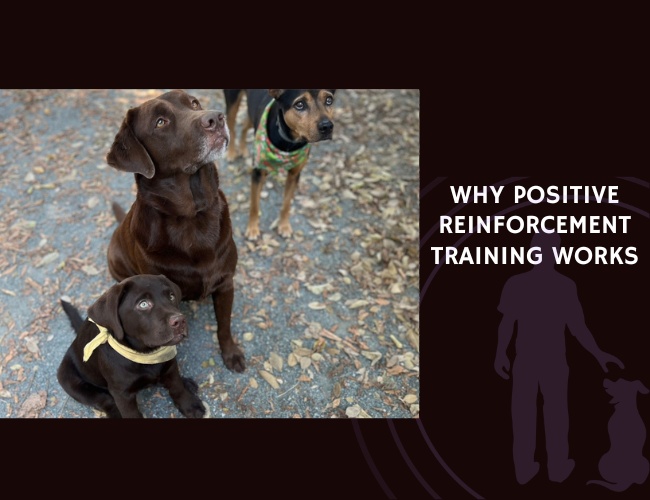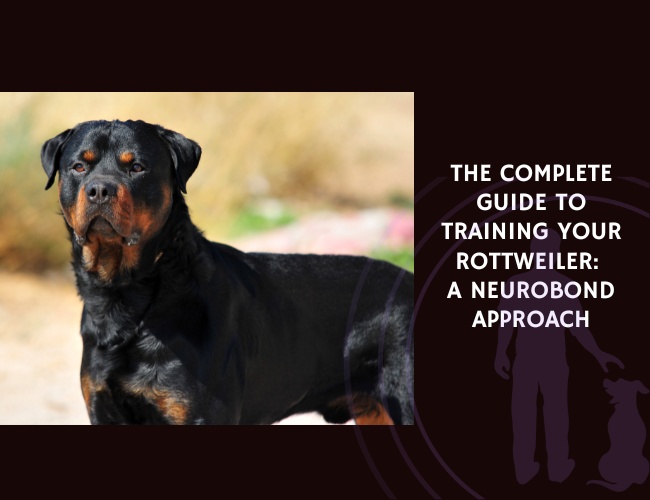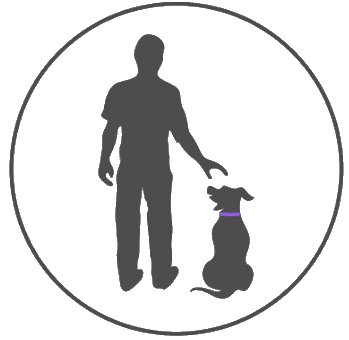Introduction to Positive Reinforcement
Definition and Core Principles of Positive Reinforcement in Dog Training
Positive reinforcement is a dog training method that rewards desired behaviors, encouraging their repetition. Rewards, such as treats, praise, or play, serve as incentives for dogs to exhibit specific behaviors again. The core principles include:
- Rewarding Desired Behaviors: This ensures that dogs associate good behaviors with positive outcomes, making them more likely to repeat those actions.
- Immediate Feedback: Timing is crucial. Rewards must be given immediately after the desired behavior to create a clear connection.
- Consistency: Regular training and consistent reward usage help reinforce desired behaviors.
Historical Development from B.F. Skinner’s Operant Conditioning
Positive reinforcement has roots in the concept of operant conditioning, developed by B.F. Skinner in the mid-20th century. Skinner’s research demonstrated how behaviors could be shaped through controlled consequences. Operant conditioning involves:
- Reinforcers: Positive (adding something pleasant) or negative (removing something unpleasant) to increase behavior.
- Punishment: Positive (adding something unpleasant) or negative (removing something pleasant) to decrease behavior.
Skinner’s work revealed that positive reinforcement is a powerful tool for shaping behaviors, not only in humans but also in animals. His studies laid the groundwork for modern dog training techniques.
Comparison with Other Training Methods Like Negative Reinforcement
Understanding different training methods is essential for grasping the uniqueness of positive reinforcement. Other common approaches include:
- Negative Reinforcement: This involves removing an unpleasant stimulus to encourage a behavior. For example, pressure on a dog’s collar is released when the dog stops pulling on the leash.
- Positive Punishment: Adding an unpleasant stimulus to decrease behavior, such as using a spray bottle when a dog jumps on furniture.
- Negative Punishment: Removing a desirable stimulus to reduce behavior, like taking away a toy when a dog misbehaves.
Compared to these methods, positive reinforcement is favored for several reasons:
- Reduces Stress and Anxiety: Dogs trained with positive reinforcement experience less stress compared to methods involving punishment or negative reinforcement.
- Enhances Learning: Positive experiences help dogs learn quicker and more effectively.
- Strengthens the Human-Animal Bond: Trust is key in the dog-owner relationship, and positive reinforcement fosters trust and cooperation.
Transitioning from traditional methods to positive reinforcement can significantly improve both the training experience and the well-being of the dog. Employing a compassionate, consistent approach sets the stage for successful training outcomes and happier, healthier relationships with our canine companions.
What is an example of positive reinforcement training?
An example of positive reinforcement training a dog can be seen in the process of teaching a dog to sit. When using positive reinforcement, the trainer waits for the dog to naturally sit or gently guides them into the sitting position. As soon as the dog sits, the trainer immediately rewards the behavior with a treat, verbal praise, or a favorite toy. This immediate reward helps the dog associate the act of sitting with a positive outcome, making it more likely that the dog will repeat the behavior in the future. Over time, the dog learns to sit on command, motivated by the anticipation of a reward.
Another practical example involves training a dog to walk calmly on a leash. During a walk, if the dog begins to pull, the trainer stops and waits for the dog to return to their side. Once the dog is walking calmly beside the trainer, they receive a treat or praise. This method reinforces the idea that staying close results in positive attention, while pulling does not. Consistent application of this technique encourages the dog to maintain a relaxed pace during walks, enhancing both the dog’s and the owner’s experience.
Positive reinforcement can also be effectively used to teach a dog to come when called. In this scenario, the trainer calls the dog’s name followed by the command “come.” When the dog responds and approaches the trainer, they are rewarded with a high-value treat or enthusiastic praise. This creates a strong positive association with the recall command, encouraging the dog to respond promptly and reliably in various situations. By consistently rewarding the desired behavior, trainers can build a strong foundation for obedience and trust between themselves and their canine companions.
The Science Behind Positive Reinforcement
Neurological Basis of Reward-based Learning in Dogs
Understanding the science behind positive reinforcement in dog training begins with delving into the dog’s brain. The neurological underpinnings of reward-based learning rest on the function of neurotransmitters, primarily dopamine. When a dog performs a desired behavior and receives a reward, such as a treat or praise, their brain releases dopamine. This neurotransmitter not only creates a feeling of pleasure but also reinforces the behavior, making the dog more likely to repeat it.
Studies have shown that the brain’s reward centers are activated during positive reinforcement, solidifying the behavior through a process called synaptic plasticity. Essentially, this means that the connections between neurons become stronger with repeated positive experiences. Over time, the dog learns to associate specific actions with positive outcomes, embedding these behaviors into their neural pathways.
Role of Timing and Consistency in Reinforcement Effectiveness
One key aspect of effective positive reinforcement is timing. The reward must be given immediately after the behavior to ensure that the dog links the action with the consequence. If there is a delay, the dog may not make the connection, and the training becomes less effective. This is where tools like clickers can be particularly useful.
Consistency is equally important. For reinforcement to be effective, trainers need to apply the same rules and patterns every time. Consistent reinforcement strengthens the neural pathways associated with the desired behavior, creating a reliable routine that the dog can predict and respond to. When trainers are inconsistent, it can lead to confusion and weakened learning, as the dog cannot form a clear understanding of which behaviors are rewarded.
How Positive Associations are Formed in Canine Learning
Positive associations are formed through a process called associative learning, which is foundational to operant conditioning. By consistently pairing a desired behavior with a positive outcome, the dog begins to form a mental link between the two. For example, if a dog sits and immediately receives a treat, the dog associates sitting with a positive experience — the treat.
Repetition plays a crucial role in solidifying these associations. Just like humans, dogs require multiple repetitions to firmly encode the behavior-reward link in their memory. Over time, the dog starts to expect a reward whenever they perform that behavior, and the action becomes ingrained.
Additionally, the variety and value of rewards can impact how well these positive associations form. High-value rewards, such as favorite treats or toys, can create stronger associations and motivate the dog more effectively. Lower-value rewards can still be effective for simpler behaviors or when high-value treats are not available, but they may not create as robust associations.
Understanding these scientific principles highlights why positive reinforcement is such a powerful tool in dog training. It leverages the natural functions of the dog’s brain and learning processes to create strong, lasting behaviors.
Next, we will explore practical techniques for implementing positive reinforcement, including clicker training and customizing approaches for different breeds and temperaments. This will provide valuable insights into how to put these scientific principles into practice for the best outcomes.

Implementation Techniques
Overview of Clicker Training and Treat-Based Reward Systems
One of the most effective positive reinforcement techniques in dog training is clicker training. Clicker training involves using a small handheld device that makes a “click” sound to mark the exact moment your dog performs a desired behavior. This click is immediately followed by a reward, most commonly a treat. The click sound serves as a consistent and clear signal to the dog that they have done something right, making it easier for them to understand and replicate the action.
Treat-based reward systems are straightforward yet powerful. By offering treats immediately after your dog exhibits a desired behavior, you create a positive association. Treats can range from kibble to high-value rewards like small pieces of chicken or cheese. The key is to use a reward that your dog finds motivating and to ensure that the treat is given promptly and consistently each time the correct behavior is shown.
Timing and Delivery of Rewards for Maximum Effectiveness
The timing of the reward is critical in positive reinforcement training. To be effective, the reward must be given immediately after the desired behavior. This helps the dog make a clear connection between their action and the reward. Delayed rewards can confuse the dog, as they may not link the reward to the behavior you are trying to reinforce.
Using a clicker in tandem with treats helps in achieving precise timing. The click marks the exact behavior you’re reinforcing, and the treat follows as confirmation. This combination ensures that the dog understands exactly which action led to the reward.
Consistency is equally important in delivering rewards. Ensure that all family members or anyone involved in the dog’s training are on the same page regarding which behaviors are being reinforced and how the rewards are delivered. Inconsistent reinforcement can slow the learning process and create confusion.
Customizing Approaches for Different Dog Breeds and Temperaments
Every dog is unique, and training must be tailored to their individual characteristics. Different breeds and temperaments can influence how a dog responds to various training methods. For example, high-energy breeds like Border Collies may require a more dynamic and engaging training approach, with plenty of physical activities and play integrated into the sessions. On the other hand, more laid-back breeds like Basset Hounds may prefer slower-paced and calmer training environments.
When working with puppies or young dogs, shorter and more frequent training sessions can be more effective, as their attention spans are generally shorter. For older dogs, patience and gradual progress are crucial, as they might have ingrained habits that take longer to change.
Understanding and respecting a dog’s temperament is critical. Some dogs might be more sensitive and might not respond well to treats but show enthusiasm for verbal praise and petting. Others might be food-motivated and work best with a variety of high-value treats.
By observing your dog’s responses, you can adjust your approach to suit their needs, ensuring a positive and productive training experience for both you and your furry friend.
To conclude, establishing a consistent, rewarding, and tailored approach that aligns with your dog’s unique needs and preferences sets the foundation for a successful training journey. Adjusting methods to suit individual temperaments can make all the difference in creating a harmonious learning process.
Benefits and Behavioral Outcomes
Impact on Reducing Problem Behaviors
Positive reinforcement has shown remarkable effectiveness in addressing problem behaviors such as aggression and anxiety in dogs. When a dog receives a reward for displaying desirable behavior, it tends to repeat that behavior to receive more rewards. This method contrasts sharply with punishment-based methods, which can often exacerbicate aggressive tendencies and elevate stress levels in dogs. By focusing on rewarding desired behavior rather than punishing undesirable actions, positive reinforcement helps create a calm, safe learning environment for the dog.
For example, using treats or praise to reward a dog for calm behavior around other animals can reduce aggression over time. Similarly, slowly exposing an anxious dog to stressors while offering high-value rewards can desensitize them to these triggers, gradually reducing their anxiety. This approach, known as counter-conditioning, effectively replaces fear or aggression with a positive association.

Strengthening the Human-Dog Bond
Another substantial benefit of positive reinforcement training is the strengthening of the bond between humans and their canine companions. Dogs naturally crave attention and approval from their owners. Positive reinforcement leverages this inclination by making training a fun and rewarding experience for both the dog and the owner.
When owners consistently reward their dogs for good behavior, dogs start to see their owners as providers of positive outcomes. This perception fosters trust and reinforces the dog’s sense of security under the owner’s guidance. Over time, this approach can transform training sessions into quality bonding moments, deepening the emotional connection between the human and the dog.
Long-Term Behavioral Improvements and Psychological Well-Being
Positive reinforcement not only brings immediate behavior changes but also contributes significantly to long-term behavioral improvements and psychological well-being. Training techniques based on reward systems encourage dogs to be more confident and curious, which contributes to overall well-being. As dogs learn to associate behaviors with positive outcomes, they become more relaxed and keen to engage in learning new commands and tricks.
Long-term use of positive reinforcement establishes a foundation for consistent, desirable behavior. Dogs trained with these methods are often better adapted to new situations and less prone to fear-based responses. Moreover, because positive reinforcement training is non-invasive and promotes a stress-free environment, it is highly conducive to a dog’s mental health, fostering a happy and well-adjusted pet.
With the significant benefits highlighted here, it is clear that positive reinforcement training holds immense value for both dog owners and their beloved pets. As we continue exploring this incredible training method, it becomes evident that fine-tuning our techniques will only enhance these outcomes further.
Common Challenges and Solutions
Embarking on a journey with positive reinforcement in dog training can lead to incredible transformations, but it’s not without challenges. As you navigate through the training process, you might encounter obstacles that can be overcome with a blend of strategy and understanding. Let’s delve into some typical roadblocks and how to manage them effectively.
Addressing Inconsistency in Reward Delivery
Consistency is the backbone of any training regimen, and positive reinforcement is no exception. Inconsistency in reward delivery can confuse your dog and impede their learning process. Here’s how to tackle this issue:
- Create a Schedule: Establish a routine for training sessions to ensure that you’re rewarding your dog consistently. Set aside specific times each day dedicated to training.
- Use a Marker: Tools like clickers can provide a consistent marker of good behavior. The click sound is consistent and immediate, ensuring your dog knows exactly what behavior is being rewarded.
- Track Progress: Keep a training journal to monitor your dog’s progress and any inconsistent patterns you may have in reward delivery. This can help you adjust and maintain consistency.
Managing High-value versus Low-value Rewards
Not all rewards are created equal. High-value rewards, such as meat treats, usually garner more enthusiasm from your dog compared to low-value rewards, like kibble. It’s essential to manage these appropriately to maintain motivation:
- Identify Preferences: Learn which treats your dog values the most and use high-value rewards for more challenging tasks or behaviors that you want to strengthen significantly.
- Mix it Up: Occasionally, mix low-value rewards with high-value ones to keep your dog engaged and excited. This variability can maintain their interest and curiosity.
- Adjust According to Situations: Use high-value rewards in environments with more distractions to capture and keep your dog’s attention. Save low-value rewards for familiar settings where fewer distractions are present.
Overcoming Training Plateaus and Resistance
Training plateaus are common and can be challenging. Your dog might learn quickly at first and then suddenly stop progressing. Here’s how to navigate through these plateaus:
- Switch Up Activities: Introduce new activities or behaviors to keep training sessions fresh and engaging. This gives your dog new challenges and prevents boredom.
- Shorten Sessions: Sometimes shorter, more frequent sessions can prevent burnout and keep your dog more engaged. Aim for multiple 10-minute sessions rather than one long session.
- Celebrate Small Wins: Recognize and reward small progressions. Even minor improvements are steps forward and deserve acknowledgment. This builds your dog’s confidence and reinforces positive behavior over time.
Brief Transition to New Topics
By following these strategies, you can navigate through the common challenges of positive reinforcement training with greater ease, ensuring a seamless and effective learning experience for both you and your dog. These solutions not only address immediate training issues but also contribute to long-term success and well-being for your canine companion.
Future Applications and Recommendations
As the understanding of canine psychology deepens and positive reinforcement training techniques evolve, integrating these methods into comprehensive training programs is paramount for effective long-term outcomes.
Integration into Comprehensive Training Programs
To maximize the benefits of positive reinforcement, it’s vital to incorporate it into holistic training programs. This involves:
- Scheduled Training Sessions: Regular training times establish a routine, making dogs more receptive to learning. Consistency here is key, both in scheduling and in how commands and rewards are given.
- Use of a Marker: A marker, like a clicker, signals to the dog that they’ve performed the desired behavior correctly. This should be consistently followed by a reward to reinforce the positive association.
- Tracking Progress: Keeping a training log helps track which behaviors are improving and where adjustments are needed. This ensures a tailored approach that evolves with the dog’s learning progress.
Best Practices for Maintaining Positive Reinforcement Long-Term
Maintaining the effectiveness of positive reinforcement over the long term involves several best practices:
- Balancing Reward Types: Use a mix of high-value and low-value rewards based on your dog’s preferences and the difficulty of the task. This prevents the dog from becoming over-dependent on high-value rewards and maintains motivation.
- Introducing Novel Challenges: To prevent training plateaus, introduce new activities or variations of familiar tasks. This keeps training sessions engaging and mentally stimulating for the dog.
- Celebrating Small Wins: Acknowledge and reward even small improvements. This builds the dog’s confidence and reinforces consistent effort in the right direction.
- Training in Different Environments: Practice commands in various settings to generalize behaviors. This way, your dog learns to respond reliably, even amid distractions.
Emergent Trends in Positive Reinforcement Training Methods
The field of positive reinforcement is continuously evolving, with new trends emerging to enhance training effectiveness. Some of these include:
- Technology Integration: Apps and gadgets designed to assist with training are becoming more popular. These tools can provide instant feedback, track progress, and remind owners of training schedules.
- Enrichment Activities: Incorporating brain games and puzzle toys into training sessions keeps dogs mentally engaged and reduces the likelihood of boredom-related behaviors.
- Professional Guidance: Enlisting the help of a professional trainer can provide personalized guidance and advanced techniques. Group classes also offer socialization opportunities, which are beneficial for a dog’s social development.
By following these recommendations, you can ensure a positive and productive training experience that strengthens the bond between you and your dog. This will also prepare you for advancing further in training, where you can explore more complex behaviors and commands, tailored specifically to your dog’s unique needs and abilities.










